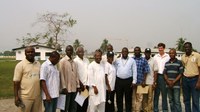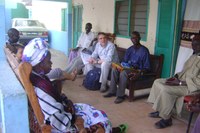The COAST Stakeholder Engagement Strategy

The aim of this section is to outline a strategy for encouraging the engagement of a wider spread of stakeholders from each of the stakeholder groupings in Coastal Tourism, and thereby maximize the likely uptake and sustainability of best practices and technologies which have been applied and tested within the African context of the COAST Project.
Stakeholders in the COAST project can be categorized into three on the basis of their involvement as; core implementation actors (being consulted during implementation) secondary actors (second layer of project beneficiaries but not involved in actual implementation) and general participants/beneficiaries, those, and those with whom we will share our results (passive target).
Core actors, represent the group of stakeholders who have direct involvement in implementing project activities, either directly, or through collaboration. For the COAST Project these people are the National Focal Points (FPs), the Demo site Project Coordinators (DPCs) and the Demo Site Management Committee (DSMC) members.
They also include locally based authorities and NGO/CBOs who are either directly, or indirectly sub-contracted by the project to carry out project activities including training events.
Those who are, or have been, consulted, by the COAST Project are secondary actors, stakeholders with whom the project is collaborating through addressing common short term, or longer term objectives – for example, local and national government authorities (aside from the tourism and environment sectors – who are participants – refer above), other donor supported country level projects, and GEF supported International Waters transboundary projects, such as the ASLME, GCLME and Benguela Current LME.
 Finally, there are stakeholders whom the project will ‘target’ within the KM&C Strategy referred to above. These will be general beneficiaries and will be categorized according to the three governance sectors within which the project works; hence some of these stakeholders may be neighbouring coastal communities/ community groups. Others may be members from the private sector such as Hotel and Tour Operators associations, as the project ‘outreaches’ to try to influence additional private sector investors within the coastal tourism industry.
Finally, there are stakeholders whom the project will ‘target’ within the KM&C Strategy referred to above. These will be general beneficiaries and will be categorized according to the three governance sectors within which the project works; hence some of these stakeholders may be neighbouring coastal communities/ community groups. Others may be members from the private sector such as Hotel and Tour Operators associations, as the project ‘outreaches’ to try to influence additional private sector investors within the coastal tourism industry.
Finally, there are government agencies and authorities who operate at either the local level (within the Demo site area), or national level, such as government cross sector working groups, technical committees, GEF country level committees, and inter-ministerial committees. Each of these stakeholder groupings will be ‘targeted’ with specific KM&C products derived from the project. These are explained in more detail within the Project’s KM&C implementation plan[1], but a number of examples are provided below in order to demonstrate how the COAST Project will specifically target and engage with each audience.
For copy of the COAST Stakeholder Engagement Strategy here



















